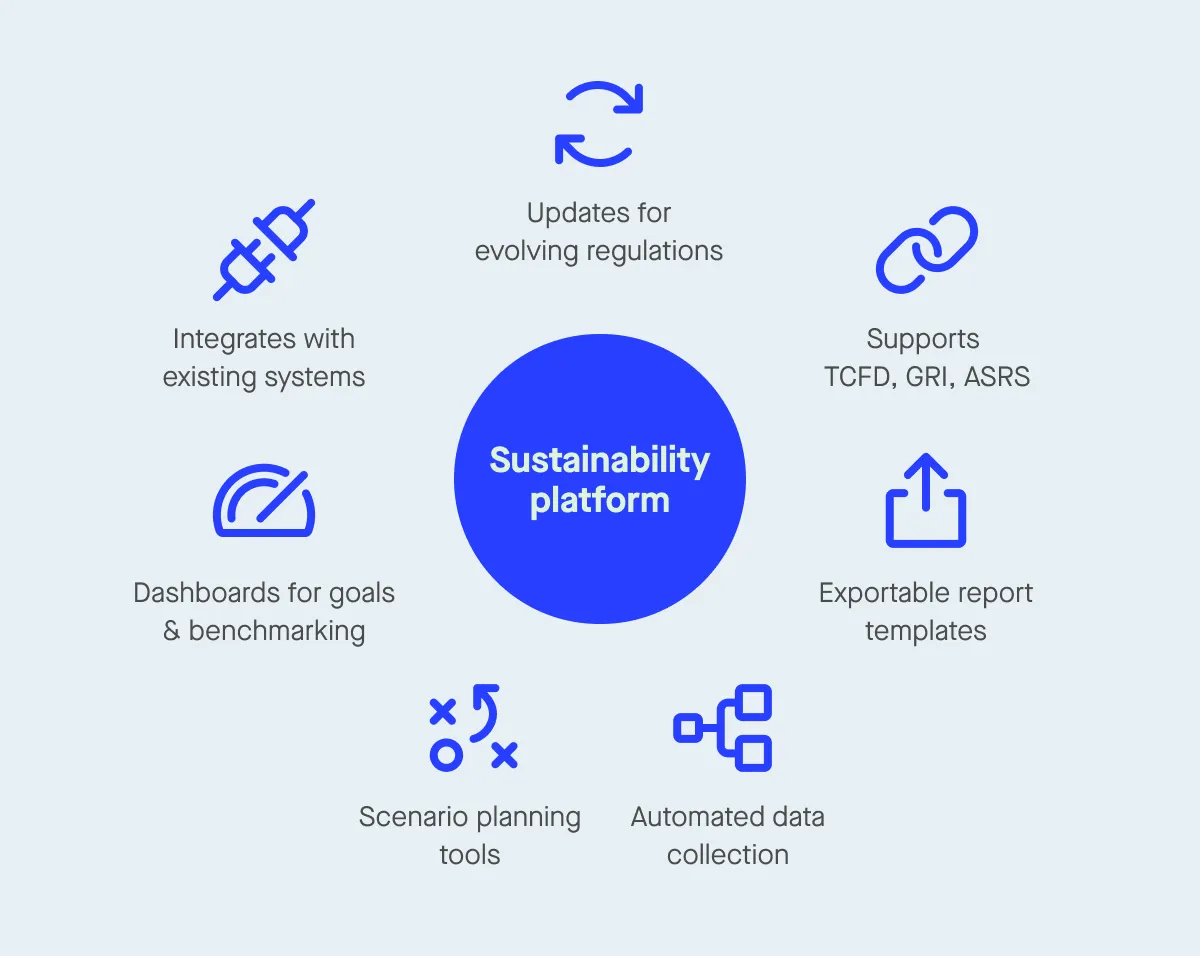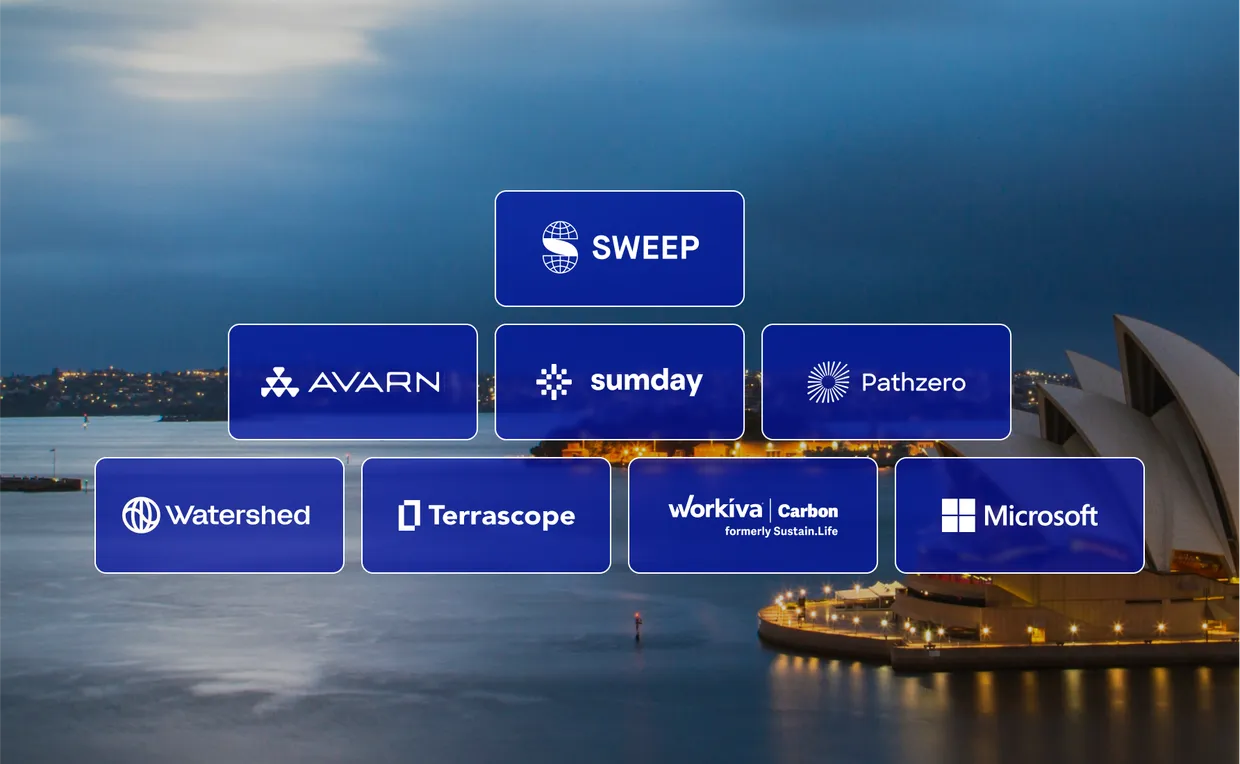What are the challenges of sustainability reporting for Australian businesses?
Despite impressive progress, many Australian companies – especially small to mid-sized enterprises –continue to face hurdles when it comes to managing ESG data and aligning with regulatory requirements.
Key challenges include:
- Data collection and manual data entry across business units and suppliers
- Lack of standardisation in emissions data and ESG metrics
- Ensuring regulatory compliance with evolving global and local standards
- Integrating ESG data with other systems like ERP, finance, and procurement
- Building internal governance to support strategic decision making
The risk of providing incomplete or low-quality sustainability data can have significant consequences, from reputational damage to failing to meet regulatory requirements. It also limits a company’s ability to monitor its carbon footprint, assess esg risks, or drive long-term sustainability performance.
Sustainability management software is a key enabler of ESG transformation. By automating data collection and centralising analytics, these platforms:
- Simplify data management and reduce the need for manual input
- Provide a comprehensive view of sustainability metrics across the value chain
- Help identify and address negative impacts
- Support risk management and regulatory alignment
- Enable strategic decision making using accurate, real-time esg data
- Build stakeholder confidence by improving transparency and esg efforts
Whether you’re pursuing energy efficiency, improving supplier sustainability, or preparing for assurance under the ASRS, a well-implemented sustainability software solution can unlock efficiencies and drive long-term value.

Before choosing a platform, businesses should ensure it supports the full ESG lifecycle. Here are must-have features:
- Automated data collection from across departments and sites
- Built-in support for common reporting frameworks like TCFD, GRI, and ASRS
- Flexible integration with existing systems
- Dashboards for benchmark performance and track sustainability goals
- Scenario planning and forecasting tools for better decision making
- Templates to easily export reports for assurance and stakeholder reporting
- Regular updates to align with evolving regulations and expectations
Look for platforms that offer an all-in-one solution – from tracking energy consumption and carbon emissions to managing regulatory compliance and automating disclosures.
Here are five sustainability software leaders that are well suited to the Australian market:
Sweep offers robust tools for emissions management, carbon footprint tracking, and carbon removal strategies. Its visually rich dashboards and built-in emissions factor libraries make it easy to identify carbon hotspots and implement improvements across the value chain.
Why it works:
- Targets enterprise customers with complex operations
- Strong user feedback on ease of use and scalability
- Supports strategic decision making for net-zero pathways
Envizi is a well-established platform that connects energy consumption, utility bills, and sustainability initiatives with performance analytics. Its strength lies in unifying sustainability data across business silos.
Why it works:
- Seamless integration with IBM’s data and AI services
- Built-in tools to manage esg risks and improve operational efficiency
- Ideal for business leaders looking to centralise esg reporting software
An Australian-grown platform, Sumday focuses on simplifying carbon accounting for SMEs. It guides users through collecting greenhouse gas emissions data and aligns with the ASRS.
Why it works:
- Strong compliance focus for regulatory requirements
- Designed for accountants and consultants as well as sustainability teams
- Enables SMEs to align with global standards without high costs
4. Microsoft Sustainability Cloud
Microsoft’s platform helps organisations track their sustainability performance and reduce their carbon footprint. It leverages Microsoft’s ecosystem and AI tools to help clients optimise energy use, track progress, and generate disclosures.
Why it works:
- Deep integration with Microsoft 365 and Dynamics
- Strong support for data management and stakeholder trust
- Focused on enabling businesses to scale their sustainability strategy
Watershed combines automated esg data capture with analytics and target tracking. It’s known for its transparency, support for carbon removal, and alignment with international standards.
Why it works:
- Real-time dashboards with embedded robust analytics
- Supports customer satisfaction through supplier engagement
- Backed by high-profile clients across industries
Sustainability software gains momentum
With Australia’s mandatory reporting already in place, investing in sustainability software is essential. Platforms like Sweep, Envizi, and Sumday are not just about compliance – they help companies:
- Drive ongoing improvement
- Minimise manual data entry
- Deliver actionable insights for decision making
- Align with global best practices and access capital
Whether you’re a large enterprise or a fast-growing SME, the right sustainability reporting software will empower you to track your environmental impact, respond to market demand, and stay ahead of evolving regulations.
Choosing a platform that matches your organisation’s needs will give you a real competitive edge, strengthen your brand value, and help you achieve sustainability goals in 2025 and beyond.





